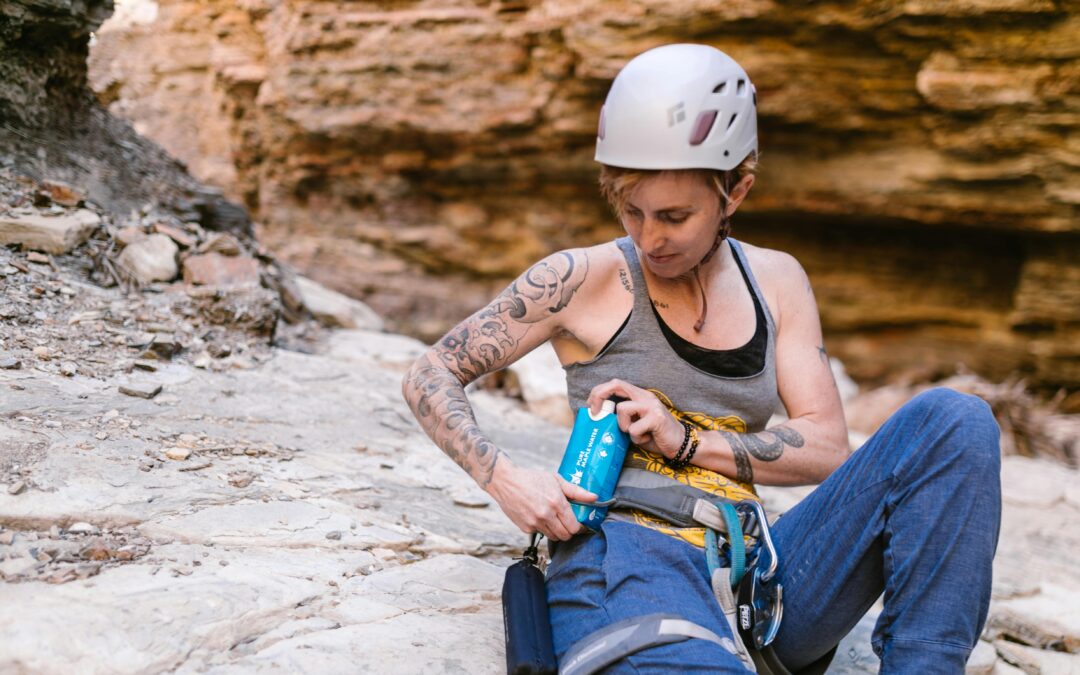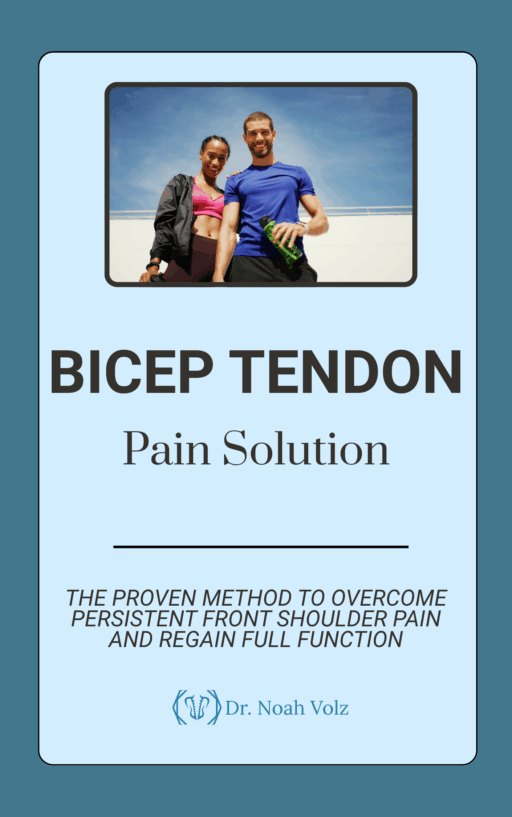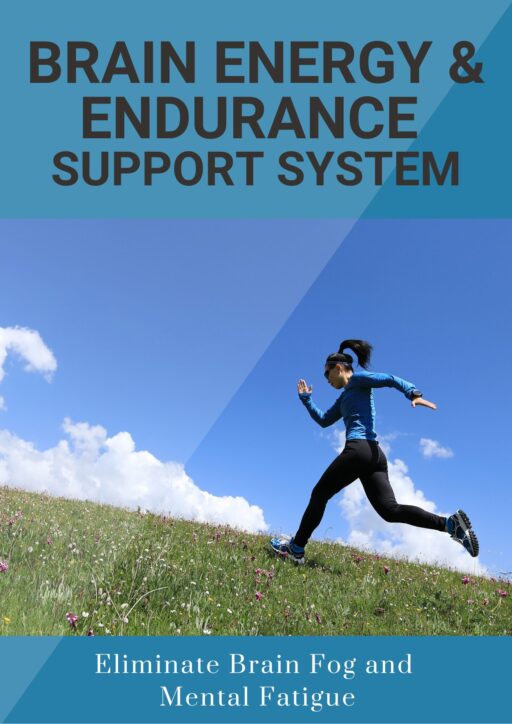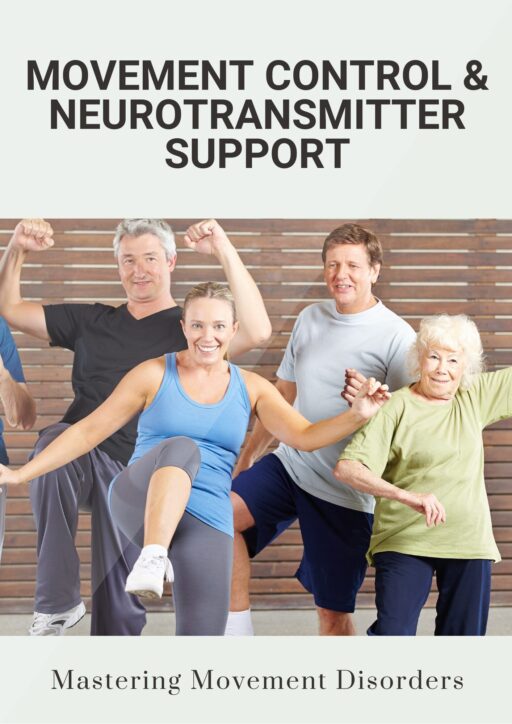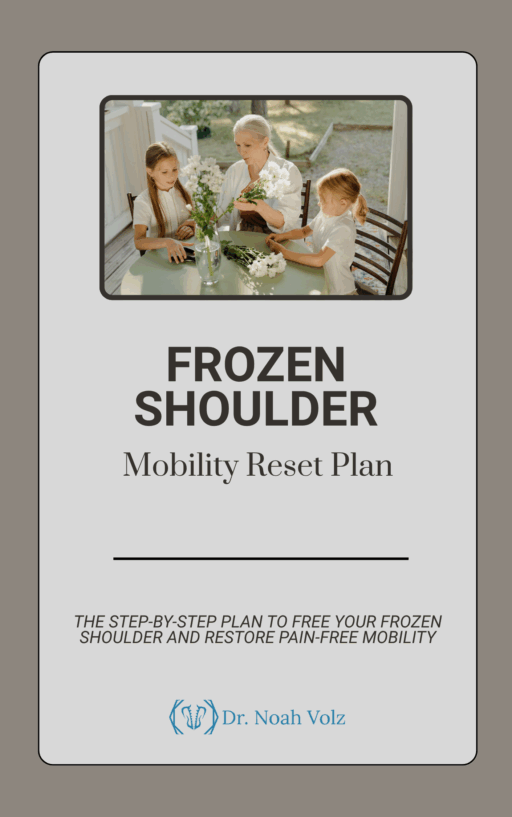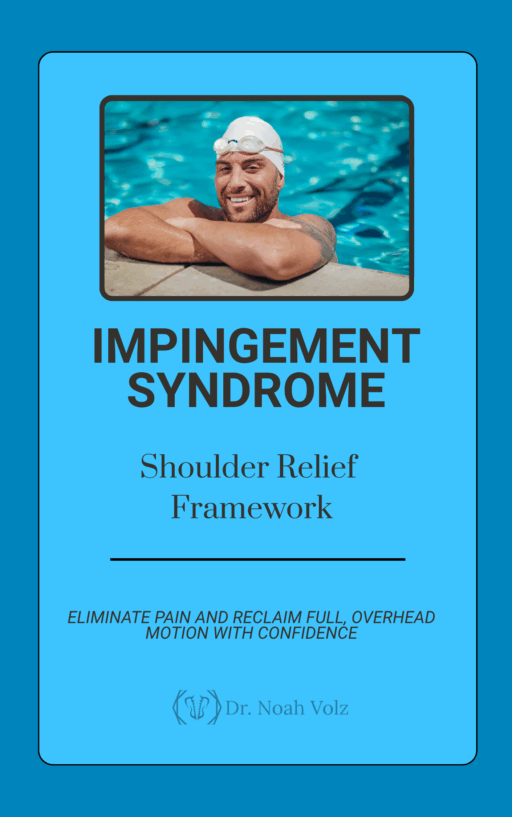Sarah had been conquering the granite walls around Ashland for over a decade. As an experienced rock climber and outdoor adventure guide, she lived for those moments of pure focus and flow that came with navigating challenging routes high above the valley floor.
But for the past eight months, her beloved sport had become a source of constant pain and frustration.
What started as a dull ache in her right shoulder after particularly challenging climbs had evolved into sharp, stabbing pain that occurred with even simple overhead movements. Reaching for a coffee mug on a high shelf sent shooting pain through her shoulder. Putting on a jacket became a careful, calculated movement.
“I remember the exact moment I knew something was seriously wrong,” Sarah recalls. “I was leading a moderate 5.7 route at Table Rock—something I’d climbed dozens of times before. When I reached up for what should have been an easy hold, pain shot through my shoulder so intensely that I almost lost my grip.”
The pain wasn’t limited to climbing. Simple daily activities like reaching into the backseat of her car, washing her hair, or even sleeping on her right side had become exercises in pain management. Sarah found herself unconsciously keeping her arm close to her body, which only made the stiffness and discomfort worse.
“I went from climbing 5.11 routes to struggling with beginner-level problems,” Sarah explains. “My passion was becoming my torture. I was scared I’d have to give up climbing entirely, and for me, that would mean giving up a huge part of who I am.”
Your Struggle with Shoulder Impingement: When Reaching Hurts
If you’re dealing with shoulder impingement syndrome, Sarah’s experience probably resonates deeply. This condition affects up to 65% of adults at some point in their lives and is the most common cause of shoulder pain, yet it’s often misunderstood and inadequately treated¹.
Shoulder impingement strikes a wide range of people:
- Athletes involved in overhead sports (tennis, swimming, baseball, climbing)
- Manual laborers who perform repetitive overhead tasks
- Office workers with poor posture and forward head position
- People who sleep on their side consistently
- Anyone over 40, when rotator cuff tendons begin to degenerate
Here’s what your typical day with shoulder impingement looks like:
Morning Routine: You wake up with a stiff, achy shoulder. Reaching for your alarm clock or phone reminds you immediately that something is wrong. Getting dressed becomes strategic—putting on shirts, reaching for towels, or doing your hair requires careful movement planning.
Daily Activities: Throughout the day, simple overhead movements trigger sharp, catching pain. Reaching for items on high shelves, washing your back in the shower, or lifting objects overhead becomes impossible without significant discomfort.
Work Challenges: Whether you’re typing, painting, teaching, or performing manual labor, repetitive arm movements reinforce the pain cycle. You find yourself compensating with awkward body positions that create tension in your neck and upper back.
Sleep Disruption: Lying on the affected shoulder is impossible, forcing you to sleep in uncomfortable positions. You often wake up with increased stiffness and pain, starting each day at a disadvantage.
You’ve probably been told it’s “just impingement” and tried the standard treatments: rest, anti-inflammatory medications, physical therapy exercises, and possibly cortisone injections. Some treatments provided temporary relief, but the pain and limitation always returned.
The Hidden Truth About Shoulder Impingement Syndrome
Most people think shoulder impingement is simply a mechanical problem—the rotator cuff tendons getting “pinched” under the acromion (roof of the shoulder). While mechanical factors play a role, chronic shoulder impingement is actually a complex condition involving multiple tissue types and pain mechanisms.
Here’s what’s really happening in your shoulder:
The rotator cuff consists of four muscles and their tendons that stabilize your shoulder joint and enable smooth, coordinated movement. When these tendons are repeatedly stressed—whether from overhead activities, poor posture, or age-related changes—they begin to degenerate and become inflamed.
Research published in the Journal of Shoulder and Elbow Surgery reveals that chronic shoulder impingement involves:
- Tendinopathy: Degenerative changes in rotator cuff tendons, particularly the supraspinatus
- Bursal inflammation: The subacromial bursa becomes chronically inflamed and thickened
- Muscle weakness: Pain-induced disuse leads to rotator cuff and scapular stabilizer weakness
- Altered biomechanics: Compensation patterns create abnormal shoulder blade movement
- Neural sensitization: Chronic pain pathways become amplified and persistent²
This explains why simple rest and anti-inflammatory treatments often provide only temporary relief—they address surface symptoms but don’t heal the underlying tendon degeneration or restore normal shoulder mechanics.
The rotator cuff tendons have naturally poor blood supply, especially in the “critical zone” where most tears occur. This makes them inherently slow to heal and prone to developing chronic problems when injured.
Why Cortisone Injections Often Make Shoulder Problems Worse
Many shoulder impingement sufferers receive cortisone injections when physical therapy fails to provide adequate relief. While these injections can provide dramatic short-term pain relief, research shows they may actually impair long-term healing and increase the risk of tendon rupture.
A study in the Journal of Bone and Joint Surgery followed 416 patients with rotator cuff tendinopathy for two years, comparing cortisone injections to physical therapy and placebo injections. The results were concerning: while cortisone provided faster initial pain relief, patients who received multiple injections had significantly higher rates of tendon rupture and worse long-term outcomes³.
Cortisone works by suppressing inflammation and immune response—the very processes your body needs for tissue repair. In tendons that already have poor blood supply, this suppression can prevent healing and actually accelerate degeneration.
The Revolutionary Treatment That Regenerates Rotator Cuff Tendons
What if there was a treatment that could stimulate your rotator cuff tendons to heal and regenerate healthy tissue? What if you could restore normal shoulder function without the risks of repeated injections or surgery?
Radial Extracorporeal Shockwave Therapy (rESWT) represents a breakthrough in shoulder impingement treatment by promoting actual tissue healing rather than symptom suppression.
This cutting-edge therapy uses precisely calibrated acoustic waves to trigger multiple healing mechanisms:
Enhanced Vascularization: Shockwaves stimulate the formation of new blood vessels in the rotator cuff tendons, dramatically improving the normally poor blood supply.
Tendon Regeneration: The treatment activates growth factors and stem cells that rebuild healthy, strong tendon tissue.
Inflammation Resolution: Rather than suppressing inflammation, shockwaves promote its natural resolution through enhanced healing pathways.
Calcification Breakdown: Acoustic waves help dissolve calcium deposits that commonly form in chronic rotator cuff tendinopathy.
Muscle Activation: The treatment helps restore normal muscle firing patterns and reduces trigger points that contribute to dysfunction.
Pain Modulation: Shockwaves influence nerve pathways to reduce sensitization and reset chronic pain patterns.
The result isn’t just temporary pain relief—it’s comprehensive restoration of healthy shoulder function and return to full overhead activities.
The Science That’s Revolutionizing Shoulder Treatment
The research supporting radial shockwave therapy for shoulder impingement is compelling enough that it’s now considered a first-line treatment at leading orthopedic centers worldwide.
A landmark randomized controlled trial published in the American Journal of Physical Medicine & Rehabilitation followed 144 patients with chronic shoulder impingement. Patients received either shockwave therapy or sham treatment. The results were remarkable: 81% of shockwave patients achieved significant pain reduction and functional improvement compared to 23% in the control group⁴.
Research in the Journal of Shoulder and Elbow Surgery compared radial shockwave therapy to cortisone injections in 126 patients with rotator cuff tendinopathy. The shockwave group showed superior results: 76% achieved clinically significant improvement compared to 42% in the injection group, and the effects lasted significantly longer with continued improvement over 12 months⁵.
A systematic review published in Physical Therapy in Sport analyzed 15 clinical trials involving over 1,200 shoulder impingement patients. The meta-analysis concluded that shockwave therapy was superior to conventional treatments for both pain reduction and functional restoration⁶.
Most impressive: Long-term follow-up studies show that patients treated with radial shockwave therapy not only maintain their improvements but often continue to get better for months after treatment completion as the regenerative healing process continues.
Sarah’s Journey Back to the Rock
Remember Sarah, the rock climber whose shoulder pain threatened to end her climbing career? After her second cortisone injection provided only six weeks of relief, her sports medicine doctor recommended radial shockwave therapy.
“I was willing to try anything that might help me avoid surgery,” Sarah admits. “I’d researched the treatment online and was impressed by the studies showing actual tendon healing rather than just pain masking. As an athlete, the idea of making my tendons stronger rather than weaker really appealed to me.”
Sarah’s treatment protocol involved five shockwave sessions over seven weeks. Each 20-minute treatment systematically targeted her rotator cuff tendons, subacromial bursa, and associated trigger points.
“The treatment was intense but completely tolerable,” Sarah describes. “It felt like deep, rhythmic percussion directly on the painful areas. The therapist explained that some temporary soreness was normal as the healing response activated.”
Sarah’s recovery timeline:
Week 2: Could reach overhead without sharp catching pain for first time in months Week 4: Sleeping on affected side became possible with minimal discomfort Week 6: Returned to easy climbing routes (5.5-5.6) with careful movement Week 10: Completed first multi-pitch climb since injury onset Week 16: Back to leading challenging 5.10 routes pain-free
“It’s been 18 months since my last treatment, and my shoulder feels stronger than it did before the injury,” Sarah says with evident enthusiasm. “I’m climbing harder routes than ever, guiding multi-day climbing trips, and my shoulder feels bulletproof. The treatment didn’t just eliminate my pain—it made me a stronger, more confident climber.”
Beyond Pain Relief: Restoring Athletic Performance
What distinguishes radial shockwave therapy from traditional shoulder impingement treatments is its ability to create performance improvements rather than just symptom relief:
Tendon Quality: Damaged rotator cuff tissue is replaced with healthy, resilient tendon fibers that can withstand high demands.
Strength Restoration: Patients often regain strength levels that exceed their pre-injury baseline.
Range of Motion: Full overhead mobility is restored without pain or restriction.
Functional Performance: Athletes return to sport-specific activities with confidence and improved biomechanics.
Injury Prevention: Stronger, healthier tendons are more resistant to future injury.
The Comprehensive Treatment Approach
Success with radial shockwave therapy for shoulder impingement requires a systematic approach:
Phase 1: Assessment & Diagnosis (Week 1) Comprehensive evaluation including diagnostic imaging to assess rotator cuff integrity and identify contributing factors.
Phase 2: Active Treatment (Weeks 2-8) Typically 4-6 shockwave sessions targeting specific rotator cuff tendons and surrounding structures.
Phase 3: Functional Restoration (Weeks 6-12) Progressive strengthening exercises for rotator cuff and scapular stabilizers, combined with movement pattern training.
Phase 4: Return to Activity (Weeks 10-16) Sport-specific training and gradual return to full activities with ongoing monitoring.
The key to lasting success is addressing not just the tissue damage, but also any biomechanical factors that contributed to developing impingement in the first place.
Your Path to Overhead Freedom
Every day you live with shoulder impingement is another day your activities and quality of life suffer. Every reach you avoid, every movement you modify, every injection you endure—it all adds up to a life unnecessarily limited by shoulder pain.
The research is conclusive. The technology is proven. The patient outcomes are transformational.
Sarah went from fearing the end of her climbing career to achieving new personal bests on challenging routes. Patients in Ashland are discovering that the chronic shoulder pain they thought required surgery can actually be eliminated through tissue regeneration.
Your shoulder impingement doesn’t have to define your limitations.
You don’t have to accept that overhead activities will always be painful. You don’t have to choose between repeated injections and chronic dysfunction. You don’t have to give up the sports and activities that define your active lifestyle.
The solution exists, and it addresses the root cause of your condition.
Ready to raise your arms overhead without pain and return to the activities you love? Contact our Ashland clinic today to learn if radial shockwave therapy can restore your shoulder function and eliminate your impingement syndrome for good.
Clinical References
- Michener LA, et al. Anatomical and biomechanical mechanisms of subacromial impingement syndrome. Clin Biomech. 2003;18(5):369-379.
- Lewis JS. Rotator cuff tendinopathy/subacromial impingement syndrome: is it time for a new method of assessment? Br J Sports Med. 2009;43(4):259-264.
- Dean BJ, et al. The risks and benefits of glucocorticoid treatment for tendinopathy: a systematic review of the effects of local glucocorticoid on tendon. Semin Arthritis Rheum. 2014;43(4):570-576.
- Engebretsen K, et al. Radial extracorporeal shockwave treatment compared with supervised exercises in patients with subacromial pain syndrome: single blind randomised study. BMJ. 2009;339:b3360.
- Huisstede BM, et al. Effectiveness of treatment of calcific deposits of the rotator cuff by needling and lavage, corticosteroids, or shock wave therapy: a systematic review. Arch Phys Med Rehabil. 2009;90(8):1325-1332.
- Bannuru RR, et al. High-energy extracorporeal shock-wave therapy for treating chronic calcific tendinitis of the shoulder: a systematic review. Ann Intern Med. 2014;160(8):542-549.
-

Bicep Tendon Pain Solution
$50.00 -

Brain Detoxification & Recovery System
$50.00 -

Brain Energy and Endurance Support System
$50.00 -

Brain-Based Movement and Motor Control Training
$50.00 -

Centralized Low Back Pain
$50.00 -

Cervical Radiculopathy: Neck and Nerve Relief Pathway
$50.00 -

Complex Low Back Pain
$50.00 -

Complex Radiating Low Back Pain
$50.00 -

Cross-Pattern Low Back Pain
$50.00 -

Frozen Shoulder Mobility Reset Plan
$50.00 -

Impingement Syndrome: Shoulder Relief Framework
$50.00 -

Mastering Brain Senses: Rebuild Your Hearing, Vision, and Body Awareness
$50.00

